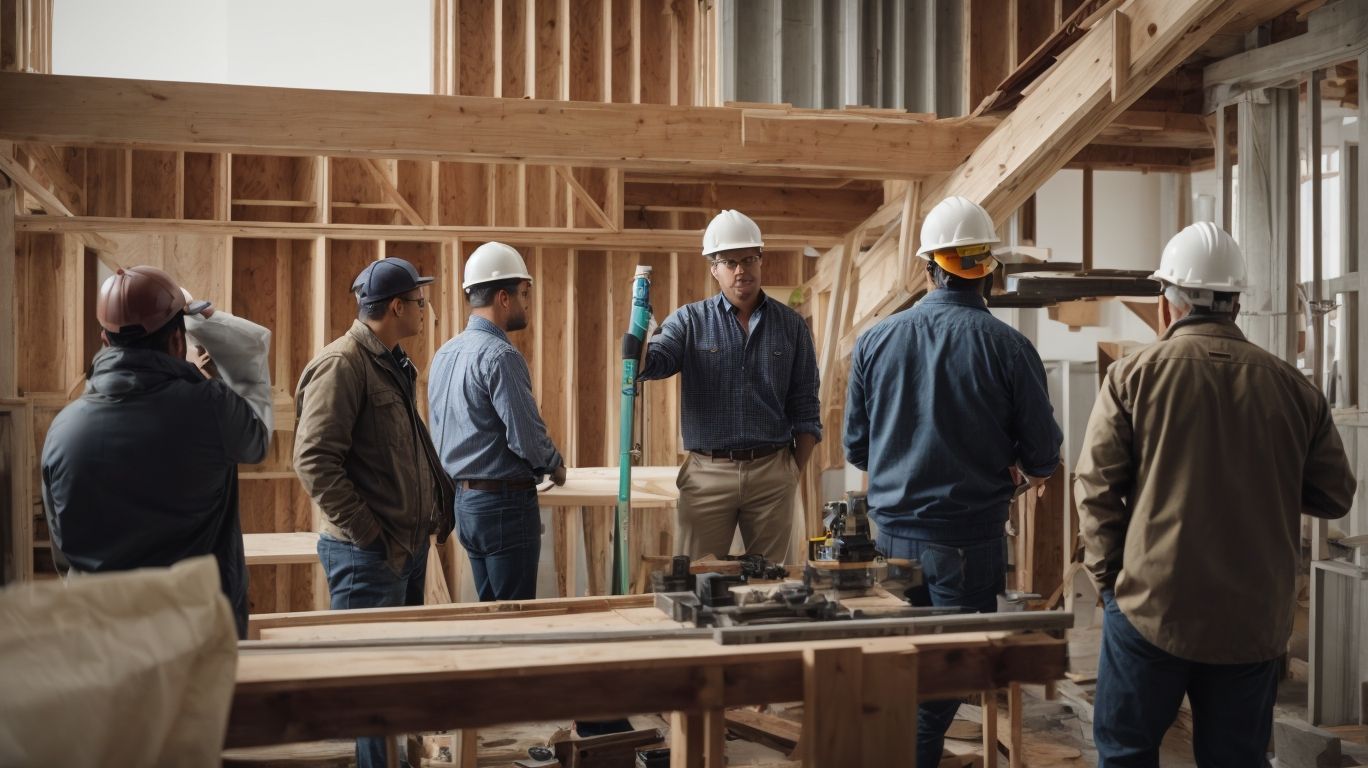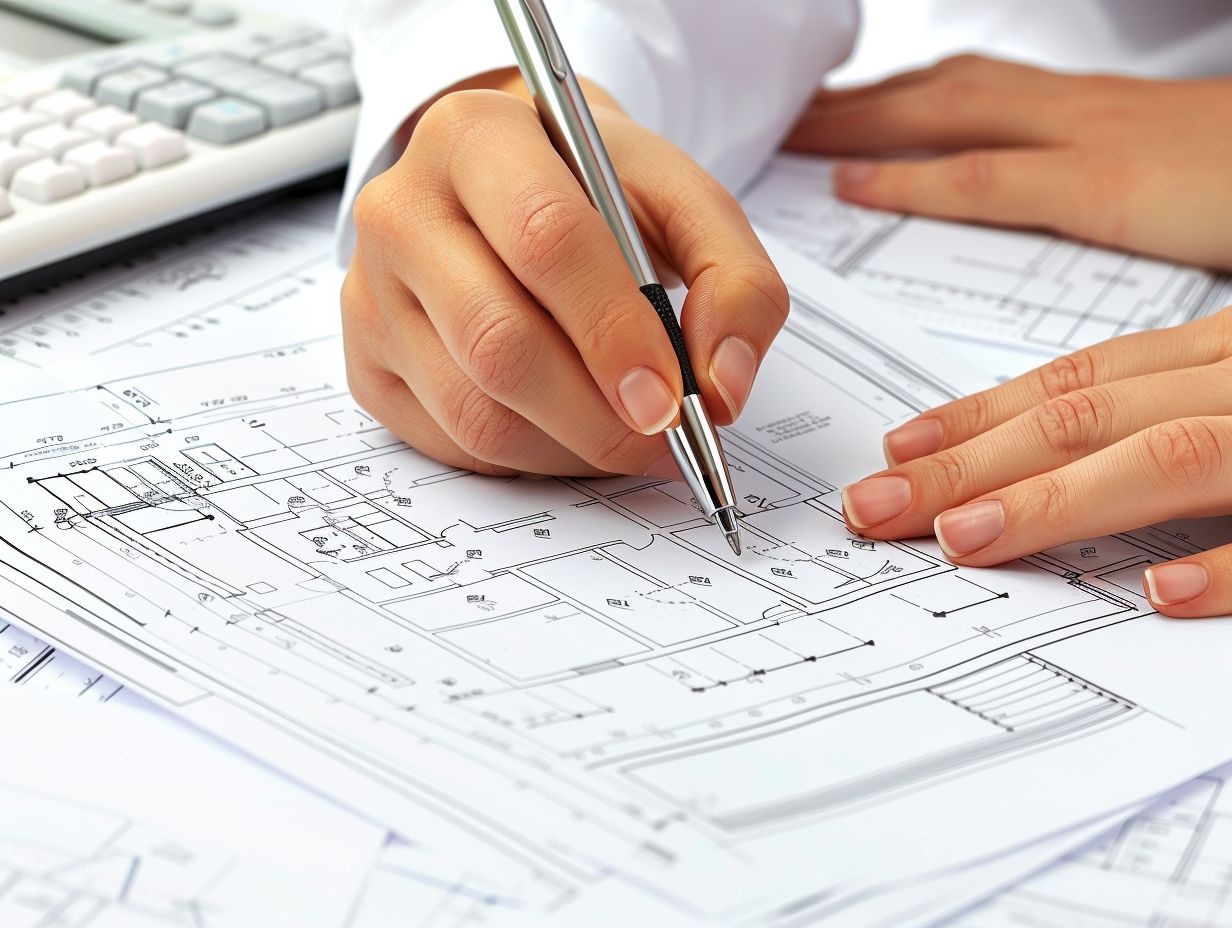
Structural Engineers and Architects: Collaborating on SF Home Remodels
In the world of home remodeling, the collaboration between structural engineers and architects plays a crucial role in ensuring the success of a project. Understanding the distinct roles and responsibilities of these professionals, as well as the importance of their collaboration, is essential for homeowners looking to undertake a remodel.
In this comprehensive guide, we will delve into the specific roles of structural engineers and architects in home remodels, explore the key differences and similarities between the two professions, and discuss the vital aspects of collaboration. From the initial consultation to the construction phase, we will outline the steps involved in the collaborative process and shed light on the common challenges that may arise. We will provide valuable insights on how homeowners can facilitate a successful collaboration between structural engineers and architects.
Whether you are planning a minor renovation or a major overhaul of your home, this article will equip you with the knowledge and understanding needed to navigate the collaborative process with confidence.
What Is the Role of a Structural Engineer in Home Remodels?
The role of a structural engineer in home remodels is vital for ensuring the structural integrity and safety of the construction in San Francisco. Structural engineers collaborate with architects and construction teams to design and oversee the implementation of structural modifications that comply with building codes and permits.
Their expertise lies in conducting thorough structural assessments, analyzing load-bearing capacities, and devising customized solutions to reinforce existing structures or incorporate new architectural elements.
Effective project management is essential, as they coordinate with various stakeholders, ensure timelines are met, and address any unforeseen challenges that may arise during the remodeling process.
Their involvement is indispensable for achieving a successful and safe home remodel in San Francisco.
What Is the Role of an Architect in Home Remodels?
Architects play a crucial role in home remodels in San Francisco by providing innovative design solutions that integrate functionality and aesthetic appeal. They collaborate with structural engineers and construction teams to create architectural plans that meet client goals while ensuring building aesthetics and sustainability.
Architects bring a wealth of expertise in architectural design, ensuring that every aspect of the home remodel is carefully considered. Their focus on client satisfaction drives them to communicate closely with the homeowners, understanding their vision and translating it into tangible, beautiful designs. Through effective collaboration, architects marry form and function, transforming spaces into harmonious environments that reflect the client’s unique preferences while adhering to structural integrity and local building codes.
This comprehensive approach brings a fresh perspective to home remodels, enriching the living experience for homeowners in San Francisco.
Why Is Collaboration Between Structural Engineers and Architects Important?
Collaboration between structural engineers and architects is crucial in San Francisco home remodels as it fosters a synergistic approach to problem-solving, incorporating structural analysis and architectural vision to deliver creative and sustainable design solutions. This collaborative process ensures the seamless integration of structural enhancements and architectural modifications, resulting in holistic and innovative designs.
It allows for the harmonious blending of technical expertise and artistic innovation, leading to spaces that are not only aesthetically pleasing but also structurally sound. By leveraging the strengths of both disciplines, the design team can anticipate and address potential challenges early in the project, resulting in cost-effective and efficient solutions. This integrated approach also enables the exploration of new materials and construction techniques, pushing the boundaries of what is possible in modern home remodels.
What Are the Key Differences Between Structural Engineers and Architects?
The key differences between structural engineers and architects in San Francisco home remodels lie in their educational backgrounds, with structural engineers focusing on engineering expertise and project coordination, while architects specialize in spatial design and architectural features.
Structural engineers prioritize structural design and modifications, whereas architects emphasize design aesthetics and project execution.
While structural engineers typically undergo rigorous training in structural analysis, material science, and building codes to ensure the safety and stability of the remodel, architects are more adept at conceptualizing the spatial layout, aesthetics, and overall look and feel of the living space. This contrast in expertise translates into their roles in home remodel projects, with structural engineers ensuring the integrity of the building’s structure and architects creating an engaging, functional, and visually appealing design for the homeowners.
Education and Training
Structural engineers typically undergo rigorous training in engineering principles, including structural analysis and design, to obtain the necessary licensing and certification for practicing in San Francisco. In contrast, architects pursue education focusing on architectural concepts, design implementation, and building aesthetics, leading to their licensure and certification.
Both structural engineers and architects are required to earn a bachelor’s degree in their respective fields, which serves as the foundation for their career paths. Upon completion of their undergraduate studies, structural engineers often pursue advanced degrees or specific certifications in structural engineering, while architects may opt for a Master of Architecture program to enhance their design and project management skills.
Subsequently, aspiring professionals in both disciplines typically undergo practical training through internships or apprenticeships to gain hands-on experience in construction practices and project coordination.
Focus of Work
The focus of work for structural engineers in San Francisco primarily revolves around project coordination, structural design, and engineering solutions to ensure building efficiency and safety. In contrast, architects center their efforts on enhancing building aesthetics, incorporating innovative designs, and sustainable practices to achieve project success and client satisfaction.
Structural engineers play a crucial role in ensuring the structural integrity of buildings, analyzing loads, and addressing potential issues related to forces and materials. Their expertise extends to collaborating with architects to integrate structural elements seamlessly into architectural designs, while also considering environmental and seismic factors.
On the other hand, architects focus on developing aesthetically pleasing and functional spaces, blending creativity with technical aspects to create visually appealing and sustainable structures that resonate with the surrounding environment.
Licensing and Certification
In San Francisco, structural engineers obtain licensing and certification based on their expertise in ensuring building codes compliance, structural stability, and cost-effective solutions. On the other hand, architects acquire licensure and certification related to architectural vision, design aesthetics, and the implementation of building regulations to meet environmental and zoning requirements.
The licensing process for structural engineers typically involves demonstrating a strong understanding of structural analysis, building materials, and construction techniques. They must exhibit proficiency in seismic design, foundation engineering, and risk assessment. Compliance with local and state regulations, including seismic safety, fire resistance, and accessibility standards, is also a fundamental aspect of their licensure.
Similarly, architects undergo certification that emphasizes their knowledge of sustainable design, building technology, and historical preservation, alongside expertise in spatial planning, building systems, and construction methods. Adherence to zoning ordinances, energy efficiency standards, and environmental impact assessments forms an essential part of their professional qualifications.
What Are the Similarities Between Structural Engineers and Architects?
Despite their distinct roles, structural engineers and architects share similarities in their collaborative approach towards integrating building codes compliance, construction materials, and sustainable design practices in San Francisco home remodels. Both professions emphasize a comprehensive understanding of building regulations and the application of innovative designs to achieve client goals and project integration.
They often work closely together to ensure that the design and structural elements of a project complement each other seamlessly. Their collaboration allows for the creation of aesthetically pleasing yet structurally sound buildings that meet the requirements of sustainable design.
The expertise of architects in spatial planning and aesthetics, combined with the technical knowledge of structural engineers in material properties and load-bearing capacities, creates a synergy that ensures the successful execution of projects while adhering to safety and environmental standards. This collaborative effort results in buildings that are not only visually stunning but also structurally secure and environmentally friendly.
Problem-solving Skills
Both structural engineers and architects possess exceptional problem-solving skills in San Francisco home remodels, with structural engineers focusing on ensuring structural stability through detailed analysis and engineering solutions, while architects excel in resolving design challenges and integrating architectural details to enhance building aesthetics and functionality.
They work collaboratively to address complex issues, such as load-bearing capacity, seismic considerations, and spatial constraints. With their specialized expertise, structural engineers can innovate solutions for reinforcing existing structures and introducing modern building materials. Meanwhile, architects contribute by harmonizing interior layouts with exterior facades, optimizing natural lighting, and incorporating sustainable design elements. Together, they create cohesive, safe, and visually appealing spaces, reflecting the fusion of structural integrity and artistic vision in home renovation projects.
Knowledge of Building Codes and Regulations
Both structural engineers and architects demonstrate a comprehensive understanding of building codes and regulations in San Francisco, facilitating effective construction management and compliance with zoning and construction standards. Their collective knowledge ensures the seamless integration of architectural and structural design elements while adhering to legal requirements.
This shared expertise plays a pivotal role in the successful execution of construction projects, as it enables the professionals to navigate the complexities of local and national building regulations. By working collaboratively, they can develop innovative designs that not only showcase aesthetic appeal but also prioritize safety and structural integrity.
Their awareness of seismic codes and fire safety regulations in San Francisco ensures that all architectural and structural elements are in full compliance, enhancing the overall quality and safety of the built environment in the city.
Understanding of Construction Materials
Both structural engineers and architects possess a comprehensive understanding of construction materials, prioritizing building safety and the incorporation of sustainable practices in San Francisco home remodels. Their expertise ensures the selection and utilization of materials that enhance building performance and environmental impact.
They work in tandem to evaluate the structural integrity of materials, considering factors such as strength, durability, and resistance to environmental elements. Their collaborative efforts extend to sustainable practices by incorporating eco-friendly materials and designing energy-efficient structures. By seamlessly integrating sustainability and performance, they contribute to the longevity and ecological responsibility of the built environment.
What Are the Steps for Collaborating on a Home Remodel Project?
Collaborating on a home remodel project in San Francisco entails several key steps, starting with the initial consultation and site visit to assess project scope and requirements. Subsequently, the design and planning phase involves the collaboration of structural engineers and architects to create innovative and compliant design solutions, followed by the permitting and approvals process to ensure regulatory compliance before entering the construction phase.
Throughout the process, open communication and transparent collaboration between all parties involved are crucial. Regular meetings and updates are essential to address any potential issues and adapt to evolving project needs.
The construction phase sees the culmination of the collaborative efforts, with architects, engineers, and contractors working in tandem to bring the design to life while ensuring structural integrity and adherence to building codes. This collaborative approach fosters a seamless and successful home remodel project, resulting in a transformed and functional living space for the homeowners.
Initial Consultation and Site Visit
The initial consultation and site visit in San Francisco home remodels serve as the foundation for effective collaboration between structural engineers and architects, enabling comprehensive project coordination and the assessment of architectural modifications needed to achieve the desired design outcomes.
During the initial consultation, the project team gains valuable insights into the client’s vision and requirements, allowing them to align their expertise with the desired design outcomes. The site visit provides an opportunity to evaluate the existing structural conditions and identify any potential challenges or opportunities for architectural modifications.
This collaborative approach not only streamlines the project management process but also ensures that the final design seamlessly integrates both aesthetic and structural considerations, resulting in a successful home remodel.
Design and Planning Phase
During the design and planning phase of San Francisco home remodels, collaboration between structural engineers and architects is essential for creating detailed architectural plans that align with zoning regulations and construction documents, ensuring a seamless transition from design to implementation.
This collaborative effort plays a critical role in ensuring that the design complies with local building codes and regulations, as well as meeting the structural requirements for the remodel project. By integrating the expertise of both structural engineers and architects, the project can address potential challenges and incorporate innovative design solutions while adhering to budgetary and timeline constraints.
The joint efforts result in the preparation of comprehensive construction documents that provide the necessary blueprint for the successful execution of the remodel project.
Permitting and Approvals
Collaboration between structural engineers and architects is essential during the permitting and approvals phase in San Francisco home remodels to ensure building codes compliance, streamline the project timeline, and secure the necessary building permits for executing the planned design modifications.
This collaborative effort involves the structural engineers and architects working closely to ensure that the proposed remodel adheres to the regulatory requirements set by the local authorities. Structural engineers play a pivotal role in examining the existing structural integrity and proposing modifications that comply with the building codes, while architects focus on the aesthetic and functional aspects of the remodel.
The coordination between these professionals is crucial to not only meet compliance standards but also to keep the project on schedule by obtaining the required building permits in a timely manner, ensuring a smooth and efficient home remodel process.”
Construction Phase
The construction phase of San Francisco home remodels demands seamless collaboration between structural engineers and architects to oversee construction management and implement structural enhancements as per the approved design, ensuring the successful realization of the remodel project’s vision.
This joint effort involves careful coordination to ensure that the architectural modifications are executed precisely, meeting all safety and quality standards. Project managers, along with the construction team, work closely to streamline the workflow, address any potential challenges, and ensure the timely completion of each phase.
Effective communication and regular progress assessments are crucial to maintaining the project’s momentum and achieving the desired outcome. The integration of innovative construction techniques and materials also plays a significant role in enhancing the structural integrity and overall aesthetic appeal of the remodeled home.
What Are Some Common Challenges When Collaborating Between Structural Engineers and Architects?
Collaborating between structural engineers and architects in San Francisco home remodels presents various challenges, including differences in design approaches, communication issues, and the need to navigate budget and timeline constraints effectively. Addressing these challenges requires open communication, mutual understanding, and a concerted focus on innovative, cost-effective solutions.
Effective collaboration hinges upon the ability of both parties to bridge the gap between their design philosophies and methods. This often involves leveraging technology to facilitate seamless communication and integration of diverse perspectives. Understanding the limitations and opportunities within the given budget and timelines is crucial for devising sustainable and efficient solutions.
Resolving design disparities demands a collaborative problem-solving approach, where both engineers and architects work together to find harmonious and structurally sound design solutions.
Differences in Design Approaches
Differences in design approaches between structural engineers and architects can pose challenges in San Francisco home remodels, requiring collaborative efforts to reconcile priorities and integrate architectural modifications seamlessly while preserving building aesthetics and structural integrity.
Such collaborations often involve navigating through the distinct focus of architects on aesthetic appeal and the structural engineers’ emphasis on safety and stability. The need for cohesive integration of architectural modifications with structural implications has become increasingly vital in the remodeling process.
This collaborative decision-making process entails understanding the architectural priorities while ensuring that the proposed modifications align with the building’s structural framework, ultimately leading to a harmonious and functional design.
Communication Issues
Communication issues can hinder effective collaboration between structural engineers and architects in San Francisco home remodels, impacting project coordination and the alignment of design solutions with client goals. Overcoming these challenges requires a clear communication framework and mutual understanding of project objectives.
By establishing regular meetings and utilizing integrated communication tools, such as Building Information Modeling (BIM) software, teams can enhance information exchange and foster a cohesive approach. This will ensure that structural considerations are seamlessly integrated into the architectural design, ultimately leading to more efficient construction processes and a better overall outcome for the client’s renovation project.”
Budget and Timeline Constraints
Managing budget and timeline constraints is a significant challenge in San Francisco home remodel collaborations, necessitating the exploration of cost-effective solutions and efficient project management strategies by both structural engineers and architects to ensure successful project outcomes within specified resource and schedule parameters.
This involves a delicate balance between delivering high-quality design and structural integrity within the allocated budget and timeline. Collaboration between structural engineers and architects is crucial to align visions and set realistic expectations from the initial planning stages.
Utilizing lean management principles can aid in optimizing resources and streamlining workflows. Embracing digital tools and software for project scheduling and cost tracking helps in enhancing transparency and accountability during the construction process, fostering a harmonious working relationship.
How Can Homeowners Ensure a Successful Collaboration Between Structural Engineers and Architects?
Homeowners play a pivotal role in ensuring a successful collaboration between structural engineers and architects in San Francisco home remodels by fostering an environment that encourages innovation, emphasizes clear communication, and prioritizes project integration to achieve the desired results and maximize client satisfaction.
Their involvement in the early stages, such as sharing their vision and expectations, helps architects and structural engineers to align their designs with the homeowner’s preferences, ensuring a harmonious blend of functionality and aesthetics. Beyond that, homeowners can facilitate open dialogue between the two professional groups, enabling them to synchronize their efforts seamlessly and make informed decisions that reflect the homeowners’ aspirations. Ultimately, this synergy between all parties involved contributes to a more cohesive and successful remodeling project outcome.




No Comments